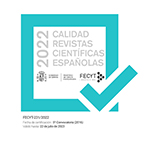Botany origin and protein content of homemade honeys from Galicia hives (NW Spain)
Abstract
The botanic origin and the protein content of 15 honeys from small bee farms exploitations of Galicia, for family consume, were studied; the aim is to check if the protein wealth and the pollen wealth are dependent parameters. Seven honeys resulted to be Rhamnus frangula unifloral (pollen patterns with low diversity), two Castanea sativa Miller unifloral, other one heather unifloral, and five was multifloral honeys of various pollen patterns (four Castanea predominant and one Rhamnus frangula predominant). Their pollen wealth was low; eight honeys classified in the Maurizio Class I, 3 in Class II, 2 in Class III, and one in Maurizio Class IV. There has been a wide variability in its protein content (0.09- 4.83 mg prot./g honey). The relative amount of pollen from different taxa has a direct or inverse proportionality to wealth protein.Downloads
Article download
License
In order to support the global exchange of knowledge, the journal Botanica Complutensis is allowing unrestricted access to its content as from its publication in this electronic edition, and as such it is an open-access journal. The originals published in this journal are the property of the Complutense University of Madrid and any reproduction thereof in full or in part must cite the source. All content is distributed under a Creative Commons Attribution 4.0 use and distribution licence (CC BY 4.0). This circumstance must be expressly stated in these terms where necessary. You can view the summary and the complete legal text of the licence.







